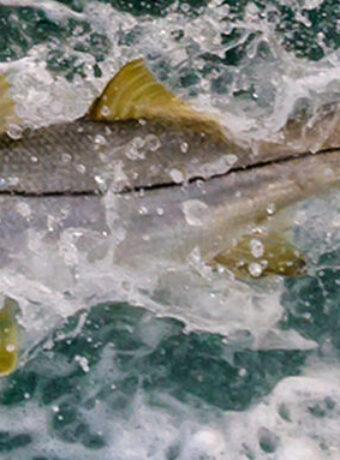Isle Royale National Park: History, Hiking, and Visit Planning
You feel the pull towards true wilderness, don’t you? Not just a scenic overlook near a parking lot, but a place where the journey itself is part of the island adventure. Isle Royale National Park calls to that deeper desire, offering a remote escape unlike almost any other national park in the lower 48 states.
This isn’t a casual weekend trip. Planning a visit requires thought and preparation, dealing with logistics most parks don’t demand. This guide explores the essential details of Isle Royale National Park History Hiking and Planning a Visit, giving you the insights needed for an unforgettable isle royale experience.
We know you are looking for more than just basics; you want the full picture. Learn about the echoes of the past, the challenge of the trails, and the practical details of making it happen. Let’s explore what makes this Lake Superior jewel so compelling and how you can best approach your own journey, covering Isle Royal National Park History Hiking and Planning a Visit thoroughly.
Table of Contents
A Glimpse into Isle Royale’s Past
Before becoming a protected wilderness, Isle Royale held different meanings for different people. The Ojibwa knew it as “Minong,” meaning “the good place,” likely referencing its abundant natural resources, particularly copper. This connection is deep, reflecting generations of Native American presence long before Europeans set foot on the main island.
Archaeological evidence shows Native Americans were mining copper here over 6,000 years ago, extracting the metal using stone tools and fire-setting techniques. They left behind thousands of small mining pits, testament to their ingenuity and long relationship with this land. Later centuries brought waves of commercial copper mining starting in the 1840s, characterized by larger shafts and more industrial methods, alongside the first hints of tourism as rustic resorts began to appear.
But a shift was coming in the early 20th century. Conservationists like Albert Stoll Jr. saw the island’s intrinsic value beyond resource extraction or fleeting recreation. Their dedicated efforts culminated when Congress authorized Isle Royale National Park in 1931, officially established by President Franklin D. Roosevelt in 1940 to preserve its unique North Woods character for future generations.
Further protections followed, solidifying its status as a sanctuary. In 1976, recognizing its untamed nature, 99% of the park’s land area was designated under the National Wilderness Preservation System. Just five years later, it became an International Biosphere Reserve, highlighting its global ecological significance and role as a site for research and conservation within the national park service network.
In recent years, cultural history gained further recognition and respect. The Minong Traditional Cultural Property acknowledged the deep Native American heritage in 2019. Then, the Minong Mine Copper Mining District became a National Historic Landmark in 2021, honoring both indigenous and later industrial mining efforts. This rich journey from resource hub to protected sanctuary profoundly shapes the royale experience for visitors today.

Isle Royale is home to the Wolf. Hike and visit in our sun protective Graphic Wolf Hoodie. A great warmer day outer layer and cooler days base layer. Being prepared mean having the right outdoor apparel. Hands are just as important as other garments. Sun protective graphic gloves are great for hiking, fishing, photograph, mountain biking and driving.

Hitting the Trails: Hiking Isle Royale National Park
With over 165 miles of paths winding through rugged, undeveloped terrain, Isle Royale is undeniably a hiker’s paradise. The trails here offer genuine immersion in the wild, far from roads, vehicles, and crowds. They range from challenging multi-day backpacking treks across the island’s large size to rewarding day hikes accessible from ferry docks.
The island’s spine is The Greenstone Ridge Trail. This 43-mile route typically takes backpackers 3 to 5 days to complete, offering expansive views from the island’s central high ground between the Windigo visitor area and Rock Harbor. It’s considered a moderate backpacking challenge, though be prepared for rocky footing, elevation changes, and variable conditions influenced by Lake Superior weather.
For those seeking a tougher, more remote route, the Minong Ridge Trail runs just under 30 miles between Windigo and McCargoe Cove. It’s known for being particularly rugged, less maintained, and demanding navigation skills, often requiring bushwhacking around beaver dams or finding faint trail sections. A popular loop option combining different trail characteristics is the 35-mile Feldtmann Loop, a 3-4 day circuit starting and ending at Windigo, exploring the southwestern shore and offering chances to see moose.

The outer layer is just as important as the base layer. Our Hydrophobic Heavy Weight Cross Country Skier Graphic Hoodie, has a sewn in facemask, pockets and thumb cuffs.
Shorter Jaunts and Day Hikes
You don’t need to commit to a multi-day backpack to experience Isle Royale’s beauty and wilderness feel. Several shorter trails offer incredible scenery and are manageable for those with limited time. The Stoll Trail to Scoville Point near Rock Harbor Lodge provides stunning coastal views of the lake superior waters and rocky shoreline, perfect for those staying at the lodge or arriving by ferry for a day or two.
Another accessible and popular option is the hike to Suzy’s Cave, reached via trails from Rock Harbor. This easy walk leads to a fascinating inland sea arch carved by wave action thousands of years ago, a remnant of ancient lake levels much higher than today. It’s a tangible glimpse into the island’s deep geological history and post-glacial past.
From Windigo, the Huginnin Loop offers a moderate challenge with rewarding views, typically taking a full day. Shorter walks include nature trails near the visitor center or the path towards Feldtmann Lake, known for potential moose sightings. Many royale visitors enjoy these shorter excursions.
Preparing for the Terrain
Don’t underestimate Isle Royale’s trails, even the seemingly short ones. They are often rocky, uneven, and laced with slippery tree roots – constant attention to your footing is required. Weather can shift rapidly due to the influence of Lake Superior, bringing rain, strong winds, dense fog, or significant temperature drops even in mid-summer.
Proper footwear is non-negotiable; sturdy, well broken-in hiking boots with good ankle support are essential for navigating the uneven ground. Reliable rain gear (jacket and pants) and layered clothing are equally important for adapting to changing conditions. Consider packing long-sleeve wool base layers for temperature regulation, moisture-wicking, and sun protection.
For hiking pants, durable, quick-drying options work well, offering flexibility and abrasion resistance. Quick-dry shorts are great for warmer days or wading; look for a pair with a built-in belt or an elastic waist swim-friendly version for versatility. A UPF sun hoodie is useful for paddling excursions or sunny hikes along exposed ridges, and a packable down puffy jacket or synthetic equivalent is crucial for staying warm during cool evenings and mornings, especially by the lake.
Don’t forget comfortable camp clothes like leggings for relaxing after a long day. A reliable day hiking pack is necessary even for short trips to carry water, snacks, rain gear, and essentials. Many hikers also appreciate using trekking poles for added stability and reduced impact on knees while navigating the rocky and root-filled trails.
Crafting Your Isle Royale Adventure: Planning a Visit
Visiting Isle Royale National Park demands more planning than most other national parks. Its isolation in the vast expanse of Lake Superior means you can’t just drive in and find a campsite easily. Thinking through logistics well in advance is crucial for a smooth and enjoyable isle royale experience when tackling Isle Royal National Park History Hiking and Planning a Visit.
Getting To the Island
Your journey truly starts before you even set foot on Isle Royale itself. Access is limited to passenger ferries or dedicated seaplane service; there are no roads or bridges connecting it to the mainland. Weather plays a significant role in transportation, potentially causing delays or cancellations, so building flexibility into your trip planning is key.
Multiple ferries offer scenic, albeit longer, crossings from both Michigan and Minnesota. The Ranger III, operated by the park service, departs from Houghton, Michigan, taking about 6 hours each way to reach Rock Harbor. From Copper Harbor, Michigan, the Queen IV makes the trip to Rock Harbor in roughly 3.5 hours. These multiple ferries provide reliable service during the operating season.
Faster options depart from Minnesota’s north shore. Ferries leave from Grand Portage, MN, operated by Grand Portage Isle Royale Transportation Lines, reaching either Windigo or Rock Harbor in about 1.5 to 2 hours depending on the specific vessel and destination. The park service advises booking passage on isle royale multiple ferries well in advance. If you’re prone to seasickness, be prepared with remedies, as the open superior waters can get rough, especially during windy conditions.
The seaplane service offers the quickest route, flying from near Hancock/Houghton, Michigan, or Grand Marais, Minnesota, directly to either Rock Harbor or Windigo. The flight takes under an hour, providing incredible aerial views of the island and surrounding waters. However, it’s significantly more expensive than the ferries and has stricter weight limits for gear.
Remember, the park itself is seasonal. While the island reopens april 16th each year, full visitor services and transportation options don’t typically begin until mid-May and run through late September. The park officially closes for the season on October 31st. Booking transportation reservations as early as possible, often starting in January, is highly recommended as popular dates sell out quickly.
So many cool destination in the world. You could state in country and visit Montana. Or don’t venture far for Mahi Mahi, Rooster Fish Fly Fishing or great wind surfing in Baja California Mexico. A really cool destination is Iceland.
Spend some time fly fishing Michigan, a fly selection and Michigan Fly Fishing Destinations.
Choosing the Best Time to Go
Timing your visit affects crowds, weather patterns, insect activity, and available park services. July and August represent the peak season. You’ll generally find the warmest air and water temperatures, and all park services, including the stores and the harbor lodge restaurant, are fully operational. But you’ll also encounter the most other isle royale visitors on trails and in campgrounds.
June offers blooming wildflowers and potentially fewer biting insects initially (though black flies can be intense), but weather can still be quite cool, and some snow may linger in shaded spots early in the month. September and early October bring beautiful fall colors, cooler hiking temperatures, and significantly fewer visitors, offering more solitude. However, services begin scaling back after Labor Day, nights get colder, and you must be prepared for the moose mating season (the rut), which means potentially more unpredictable moose behavior near trails and campgrounds.
Always check the weather forecast and current conditions before and during your trip, consulting ranger station postings for updates. Island weather is notoriously changeable, influenced heavily by Lake Superior. Prepare for a range of conditions regardless of the month you choose to spend time exploring.
Finding Your Wilderness Home: Accommodation Options
Most Isle Royale visitors fully embrace the wilderness setting by camping. The park boasts 36 designated campgrounds scattered across the main island and some surrounding islands, accessible by trail, private boat, kayak, or canoe. Camping permits are required for all overnight stays within the park boundaries.
For parties of 1 to 6 people, camping permits are typically issued upon arrival at the park on a first-come, first-served basis (Ranger III passengers can get theirs onboard during the crossing). You will need to pay fees associated with your stay. Groups of seven or more must obtain advance reservations for specific designated group campsites. Some popular campgrounds feature three-sided wooden shelters, which are also occupied on a first-come, first-served basis and offer welcome protection from rain and wind.
For those seeking more comfort or a break from camping, options are limited but available at either end of the island. The Rock Harbor Lodge, located near the eastern end, offers 60 hotel-style rooms and several housekeeping cottages complete with kitchenettes. At the western end, Windigo has two basic Windigo Camper Cabins, providing a rustic roof over your head without running water (shared restroom facilities are nearby). Both lodge rooms and camper cabins require reservations made well in advance, often a year ahead, due to very high demand.
It’s also possible to explore designated areas outside of established campgrounds via cross-country camping. However, this requires a special permit obtained in advance, detailed itinerary planning, and significant backcountry navigation and self-sufficiency skills. It’s generally recommended only for very experienced backpackers familiar with off-trail travel.
Packing for Self-Sufficiency: Gear and Supplies
Isle Royale’s remoteness means you must arrive prepared to be largely self-sufficient. While small camper stores exist in Rock Harbor and Windigo offering basic supplies, snacks, some freeze-dried meals, and canister fuel, options are minimal and expensive. Assume you need to bring virtually everything you’ll require for your stay, especially food for the duration of your trip.
Careful meal planning and packing lightweight, high-energy food is essential for backpackers needing to carry everything on their backs. Mainland grocery stops are necessary before boarding your ferry or seaplane. Near Copper Harbor, The Gas Lite General Store has some basics, but the closest full supermarket is about 45 minutes away in Calumet, Michigan. If departing from Grand Portage, Minnesota, the town of Grand Marais (about 35 miles south) is your best bet for comprehensive grocery shopping. Consider enjoying a final hearty meal mainland-side before departure, perhaps at Island View Dining near the Grand Portage ferry dock.
A reliable water filter or purification system (like tablets or UV treatment) is absolutely non-negotiable. Potable, treated drinking water is only available at the Rock Harbor and Windigo docks. Everywhere else, you must treat water sourced from Lake Superior or inland streams before drinking; it’s generally advised to avoid drawing water directly from inland lakes due to the potential for harmful algae blooms, especially later in the summer.
Navigation tools are critical as cell service is nonexistent across almost the entire island, including popular trail corridors. Carry physical, waterproof maps and a compass, and be sure you know how to use them effectively. A GPS device or a smartphone app with downloaded offline maps (like the official NPS app or other mapping apps) provides a useful backup but shouldn’t be relied upon solely due to battery life and potential signal issues in deep valleys or dense forest. Always pack a comprehensive first-aid kit tailored to potential wilderness injuries and illnesses, including blister care, pain relief, and any personal medications.
Understanding Fees and Permits
All visitors entering Isle Royale National Park need to pay a park entrance fee. This is currently set at $7 per person per day for the duration of your stay. Alternatively, frequent visitors can purchase a $60 season pass specific to Isle Royale National Park, valid for the calendar year. Paying entrance fees online through the official website before your trip is strongly encouraged by the park service to save time upon arrival and streamline the check-in process.
Standard federal recreation passes, such as the annual America the Beautiful Pass (or Senior/Access passes), are honored for the entrance fee portion for the passholder and sometimes accompanying passengers (check specific pass benefits). Overnight backpackers and boaters staying within the park need a backcountry permit. As mentioned earlier, permits for small parties (1-6 people) are typically obtained on arrival, while larger groups, boaters wishing to dock, and cross-country campers have specific requirements and often need advance reservations or permits. If unsure about permit needs for your specific plans, it is wise to contact the park directly well before your trip to clarify.
Beyond the Hike: Other Isle Royale Activities
While hiking its extensive trail system draws many visitors, Isle Royale offers diverse adventures beyond foot travel. Paddling its intricate shorelines and inland lakes, fishing its cold, clear waters, and observing its unique wildlife provide different perspectives on this remarkable ecosystem. These activities are integral to the complete Isle Royal National Park History Hiking and Planning a Visit experience.
Paddling Adventures: Kayaking and Canoeing
Exploring Isle Royale by water reveals hidden coves, dramatic cliffs, and historic lighthouses often inaccessible by trail. Inland lakes offer calmer paddling experiences suitable for canoes or recreational kayaks, providing access to different campgrounds and scenery. However, venturing onto the open waters of Lake Superior requires serious respect, appropriate equipment, and considerable preparation.
The “Big Lake,” as Superior is affectionately known, is notorious for its frigid water temperatures (hypothermia is a significant risk even in summer), unpredictable and dense fog that can appear suddenly, and fierce squalls that can whip up large waves with little warning. Only experienced sea kayakers with appropriate expedition-style boats (sea kayaks generally 15’8″ to 19′ long with bulkheads and spray skirts, or sturdy canoes at least 15′ long handled by skilled paddlers) should attempt extensive travel on the exposed lake superior waters. Even experienced paddlers can face unexpected challenges; learning about safety precautions is vital before setting out.
For less experienced paddlers or those without suitable personal boats, rentals are available at Rock Harbor and Windigo. These rentals are generally intended for exploring more sheltered areas like Tobin Harbor near Rock Harbor or the relatively protected Washington Harbor near Windigo. Guided multi-day sea kayaking trips offered by experienced outfitters like Stone Harbor Wilderness Supply (based in Minnesota) or Keweenaw Adventure Company (based in Michigan) are excellent options for safely exploring more challenging coastal routes with expert leadership and equipment.
Angling Opportunities
Isle Royale is an angler’s delight, offering diverse opportunities in both Lake Superior and its numerous inland lakes. The park is home to over 40 fish species. Anglers can pursue cold-water species like lake trout, brook trout, coho salmon, and chinook salmon in the surrounding Lake Superior waters, while the inland lakes hold populations of northern pike, yellow perch, walleye (in specific lakes), and native brook trout in some streams.
Fishing can be done from shore near docks or campgrounds, from a canoe or kayak on inland lakes or sheltered harbors, or from a private motorboat (adhering to park regulations). Remember that a Michigan fishing license is required to fish in the Lake Superior waters surrounding the park. However, a state license is *not* required for fishing solely within the inland lakes and streams of isle royale national park.
For a convenient and guided experience, consider chartering a half-day fishing trip from the marina at Rock Harbor Lodge. These charters typically provide all necessary gear and local expertise to target species like lake trout. As an added bonus, the Lodge’s restaurant might even prepare your legal catch for dinner, offering a truly fresh taste of Isle Royale.
Witnessing Wildlife
Isle Royale is perhaps most famous biologically for its moose and wolf populations, the subjects of the longest continuous predator-prey study in the world. While seeing the elusive wolves is rare (though hearing their haunting howls at night is a possibility many visitors cherish), moose sightings are quite common, especially near wetlands, beaver ponds, inland lakeshores, or sometimes directly along hiking trails. Be particularly observant and give moose plenty of space, especially during the fall rut (mating season) when bulls can be more aggressive or unpredictable.
Other mammals frequently encountered include industrious beavers (often visible constructing dams or lodges near water, especially at dusk), curious red foxes that may approach campgrounds, mink patrolling shorelines, abundant snowshoe hares, and the unique Isle Royale red squirrel subspecies. Birdwatching is also rewarding, with common loons delivering their iconic calls across the water, bald eagles and ospreys hunting overhead, and various waterfowl species like mergansers and goldeneyes found on both Lake Superior and inland waters. Bringing a pair of binoculars significantly enhances wildlife viewing opportunities from a safe distance.
Sightseeing and Learning
Beyond hiking, paddling, and fishing, take time to explore the park’s rich cultural history and natural wonders. Visit historic sites like the preserved Edisen Fishery near Rock Harbor to learn about commercial fishing families, or view the iconic lighthouses like Rock Harbor Lighthouse (accessible by trail or boat tour) and the remote Passage Island Light Station. Numerous scenic overlooks accessible via short trails offer breathtaking panoramas of the island’s rugged landscape and the vastness of Lake Superior.
Attend free Ranger Programs offered daily during the summer season at Rock Harbor and Windigo. These talks and guided walks provide expert insights into the park’s unique ecology, fascinating geology, moose/wolf dynamics, and human history – they are highly recommended for enriching your understanding and appreciation of Isle Royale. You can discuss trip details with rangers too.
Consider taking a sightseeing boat tour departing from Rock Harbor for different perspectives of the shoreline and access to points of interest like Raspberry Island or the site of the historic Rock Harbor Lighthouse. And don’t forget to look up after dark; Isle Royale’s extreme remoteness and lack of light pollution make it a designated International Dark Sky Park. On clear nights, the stargazing is phenomenal, with the Milky Way brilliantly visible, and there’s always a chance of spotting the ethereal glow of the Northern Lights (Aurora Borealis), especially later in the season.
Why Make the Journey? The Isle Royale Experience
Isle Royale National Park stands distinctly apart from other national parks. It consistently ranks as one of the least-visited national parks in terms of raw numbers, yet paradoxically, it also boasts one of the highest return visitor rates among all parks. This intriguing statistic speaks volumes about its powerful allure and the profound impact it has on those willing to embrace the journey and start planning.
The inherent effort required to reach Isle Royale—the ferry schedules, the gear hauling, the lack of easy access—naturally filters out casual tourism, leaving a space for quiet immersion in a truly wild and relatively undisturbed landscape. It’s a place to genuinely disconnect from the relentless pace and noise of daily life and reconnect with the fundamental rhythms of nature. The park challenges your self-reliance and preparation skills while rewarding you exponentially with solitude, silence, and untamed beauty rarely found elsewhere.
Understanding the Isle Royal National Park History Hiking and Planning a Visit logistics is just the necessary first step. The real, lasting payoff comes from experiencing the island itself – the haunting call of a loon echoing across a still, foggy lake at dawn, the breathtaking sight of a massive moose browsing peacefully in a marshy meadow, the simple yet profound feeling of being miles from the nearest road or reliable cell signal. It’s an adventure that tests you, changes you, and leaves
Isle Royale Pre-Trip Checklist
Thorough planning is essential for a successful Isle Royale trip. Use this table to double-check your preparations and ensure you haven’t missed critical steps:
| Planning Step | Details & Considerations |
|---|---|
| Reserve Transportation | Book ferry or seaplane passage WELL in advance (months recommended). Confirm schedules align with your planned itinerary duration. Consider backup options if possible. |
| Book Lodging (If Applicable) | Reserve Rock Harbor Lodge rooms/cottages or Windigo Camper Cabins months, potentially a year, ahead. Standard camping (1-6 people) requires permits issued on arrival, not reservations. |
| Finalize Itinerary | Plan realistic daily mileage/routes if backpacking, considering terrain difficulty. Know campground locations, water sources, and lodge/cabin check-in times. Build in buffer days for potential weather delays impacting travel. |
| Pay Park Fees | Pay entrance fees online before travel via the NPS payment portal or ensure you have a valid America the Beautiful Pass or other applicable pass ready. Be prepared to show proof of payment. |
| Obtain Permits | Understand the camping permit process (issued on arrival for small parties). Ensure any required group, boater docking, or cross-country permits are secured well in advance per park regulations. Check fishing license requirements. |
| Pack Food & Supplies | Bring ALL necessary food for your entire stay – plan meals carefully. Pack essential gear: layers, reliable rain gear, sturdy boots, water filter/treatment, comprehensive first aid, navigation tools (map/compass + backup), bug spray/head net. |
| Check Conditions | Review current park conditions alerts (trail closures, water source issues, fire restrictions) and detailed weather forecasts close to your departure date. Be aware of potential closuresisle royale updates. |
| Download Info Offline | Download NPS app data specifically for Isle Royale, offline topographic maps, tide/weather apps, or other relevant information for use without cell service. Inform someone of your itinerary. |
Mainland Logistics: Before You Cross
Don’t forget to consider your mainland arrangements leading up to your island departure. You’ll likely need lodging the night before your ferry or seaplane trip. Houghton, Michigan offers various hotel options if departing via Ranger III or seaplane from Hancock.
Copper Harbor and Grand Portage have fewer, often more rustic lodging choices, so book early if staying near those departure points. Factor in driving time to the ferry docks or seaplane base, accounting for potential traffic or road construction. Allow ample time for parking (check long-term parking options and fees) and required check-in procedures specified by your transportation provider – these often have strict cutoff times.
Perform one last thorough gear check before boarding; ensure you have your permits, passes, identification, and essentials easily accessible. Confirming your reservation directly with the transport provider a day or two beforehand is also a good practice. Proper mainland preparation helps ensure a smooth start to your isle royale adventure.
FAQs about Isle Royal National Park History Hiking and Planning a Visit
What is the history of Isle Royale National Park?
Isle Royale’s history spans millennia, beginning with extensive Native American copper mining (“Minong”) over 6,000 years ago. This was followed by periods of European exploration, fur trading, 19th/20th-century commercial copper mining, and early resort development. Recognizing its unique wilderness character, conservation efforts led to its authorization as a national park in 1931, with official establishment in 1940 to protect it from further development.
Later designations include Wilderness Area status for 99% of its land in 1976 and recognition as an International Biosphere Reserve in 1981. These actions further emphasized its commitment to preserving natural processes and cultural heritage. Recent acknowledgments like the Minong Traditional Cultural Property highlight its deep indigenous roots.
What is famous about Isle Royale National Park?
Isle Royale National Park is famous primarily for its extreme remoteness and isolation within Lake Superior, accessible only by boat or seaplane. This isolation fosters a unique wilderness character, largely free from development. It’s also renowned globally for the long-term ecological study focusing on the dynamic predator-prey relationship between its timber wolf and moose populations, providing invaluable scientific insights.
Additionally, the park is known for its rugged, scenic hiking trails, particularly the Greenstone and Minong Ridges, its pristine shorelines perfect for kayaking, excellent cold-water fishing opportunities, and its designation as an International Dark Sky Park. Its challenging access makes the isle royale experience highly sought after by those seeking true solitude. Many isle royale visitors return year after year.
What are the top 5 things to do in Isle Royale National Park?
Based on visitor interests and park highlights, top activities generally include:
- Backpacking a significant portion of the Greenstone Ridge Trail or the more challenging Minong Ridge Trail for immersive wilderness travel.
- Day hiking from Rock Harbor or Windigo to scenic points like Scoville Point, Lookout Louise, Feldtmann Lake Overlook, or Suzy’s Cave.
- Kayaking or canoeing inland lakes (like Chickenbone or Richie) or exploring sheltered Lake Superior harbors (like Tobin Harbor or Washington Harbor).
- Fishing for lake trout, salmon, brook trout, or northern pike in either Lake Superior (with MI license) or inland lakes (no license needed).
- Attending informative and engaging Ranger Programs to learn about the park’s unique ecology, wildlife (moose/wolves), history, and geology.
What is the best month to visit Isle Royale National Park?
The “best” month truly depends on individual priorities and tolerance for varying conditions. July and August offer the warmest weather, longest days, and fully operational park services (stores, lodge, programs), but also the highest concentration of visitors and potentially more biting insects (flies, mosquitoes). June sees fewer people initially and blooming wildflowers, but can have significant black fly hatches and cooler, potentially wetter weather.
September is favored by many return visitors for its stunning fall colors, cooler hiking temperatures, fewer insects, and increased solitude as crowds thin after Labor Day. However, services begin to reduce, nights become significantly colder, and weather becomes more unpredictable with a higher chance of storms or strong winds. Careful trip planning considering these factors alongside Isle Royal National Park History Hiking and Planning a Visit helps determine the optimal time for your personal island adventure.
Conclusion of Isle Royale National Park
Visiting Isle Royale is far more than a typical vacation; it’s an immersion into a world apart. It demands thorough preparation and a degree of self-reliance rarely required in other national parks, but offers profound rewards: deep silence, welcome solitude, and an intimate connection to a truly wild place. While similar feelings might be evoked in remote areas like Canada’s Waterton Lakes National Park, Alberta, Isle Royale possesses a unique spirit, fiercely guarded and shaped by the formidable presence of Lake Superior.
The faint echoes of ancient Ojibwa miners, the physical challenge and reward of its rugged trails, the simple peace found at a lakeside campsite as dusk settles – these elements combine to create an experience that is both humbling and exhilarating. It’s a journey that challenges perceptions and often fosters a deeper appreciation for wilderness. Planning carefully, using resources like this guide focused on Isle Royal National Park History Hiking and Planning a Visit, is the essential first step towards that transformative royale experience.






